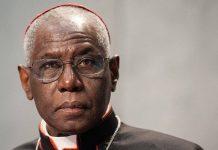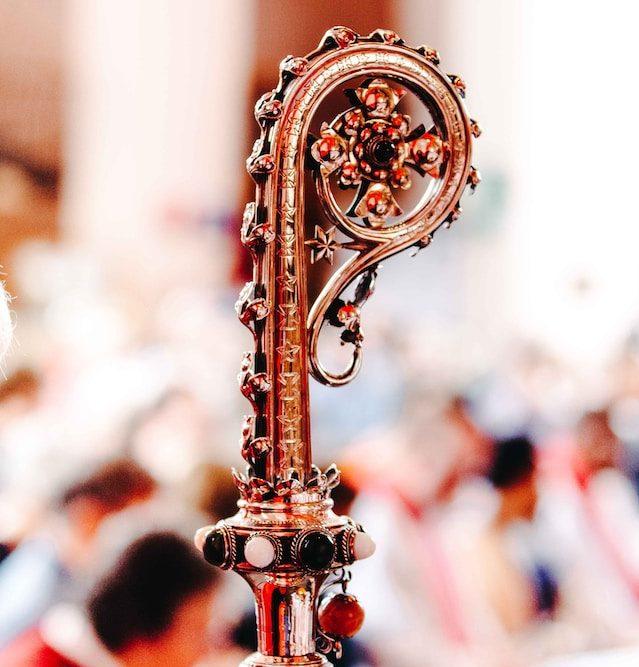In the church of the Dominicans in Cologne, Germany, there is a stained glass window in honor of Saint Albert the Great, on which it is written that he was a shining destroyer of heresies and a scourge of the wicked.
Newsroom (03/12/2023 11:21, Gaudium Press) Born into a noble family around 1200 in Lauingen – in Bavaria, southern Germany – Albert was orphaned as a child and brought up by an uncle.
One day, Our Lady appeared to him and recommended that he abandon the world and become a religious. In 1223, he went to study law at the University of Padua in northern Italy.
Walking through the streets of that city, he saw Blessed Jordan of Saxony, superior of the Dominicans and successor to St. Dominic of Gusmão, preaching in a square and surrounded by a small crowd.
Full of admiration for his person and his words, Albert remembered the advice of the Blessed Virgin and, once the sermon was over, asked Blessed Jordan to accept him into his Institution. Having been accepted, he took his religious vows and became a Dominican at the age of 26.
On the orders of the convent superior, he went to study theology at the University of Bologna, Italy. In 1228, he traveled to Cologne – western Germany – to teach his brothers in habit. He then went on to write works that attracted the attention of cultural circles.
A genius who discovered and admired a great genius
He gave lectures at the main universities in Europe. And around 1245, he was sent by his superiors to the famous University of Paris to obtain a doctorate in theology. His lectures attracted so many disciples that he started giving them in public squares.
He taught there for two years and had the distinguished grace of having St. Thomas Aquinas as a student, who had been violently persecuted by his family when he became a Dominican monk.
Noticing that Fray Thomas’ colleagues called him an ox because of his large body, his big meditative eyes and his silence, St. Albert said: “‘His mooing will reverberate throughout the world, and for a long time to come. He was a genius who discovered and admired a great genius.”[1]
In order to take part in the General Chapter of the Order of Preachers to be held in Cologne, St. Albert, filled with admiration for Thomas’ intellectual capacity and, above all, his holiness, took him with him so that they could both deepen their studies.
Appointed Provincial of the Order for Germany, Austria, Holland and Alsace – in present-day France – in 1254, St. Albert traveled around these regions on foot to resolve issues and sanctify souls.
In 1260, he was consecrated Bishop of Regensburg in Bavaria. Pope Urban IV sent him to Germany and Bohemia to preach a Crusade against the Muslims[2].
Having resigned from the episcopate, around 1267 he returned to Cologne where he continued to teach.
Blessed Gregory X wanted a Crusade against the Mohammedans
In 1274, Pope Blessed Gregory X convened the Second Council of Lyon in France, whose main objective was to carry out a Crusade against the Mohammedans.
It was attended – in addition to 500 bishops, abbots and princes – by St. Albert the Great and St. Bonaventure, Superior General of the Franciscans, who had been consecrated bishop and made a cardinal the previous year.
St. Thomas Aquinas, who was in Naples, was ordered by Blessed Gregory X to attend the council in order to give a presentation on his book in which he refuted the errors propounded by the Greek schismatics.
He set off for Lyon, but was struck down by a strange illness and died in the Cistercian Abbey of Fossanova, in central Italy.
When this news reached Lyon, the participants in the assembly were struck by another piece of news: after the fourth session of the council, St. Bonaventure died in the Franciscan convent in that city.
At the end of the council, Blessed Gregory X called on all the clergy, especially the Dominicans and Franciscans, to preach the Crusade. He encouraged Catholic kings and nobles to organize it, and “proclaimed his unbreakable decision to go to Asia himself with all the Christian princes.”[3]
Unfortunately, due to conflicts between the sovereigns of Europe, driven by petty personal interests, the Crusade did not take place.
Defense of his thesis at the University of Paris
Once the Council was over, St. Albert returned to the convent in Cologne, where he continued to teach and write. In 1277, at the University of Paris, he defended his thesis on Aristotle, based on his own arguments and, above all, on the considerations of St. Thomas Aquinas, with whom he had talked about the subject many times.
He returned to Cologne and, two years before his death, he lost his memory, but he always acted with total dignity and respect, because holiness had become second nature to him.
On November 15, 1280, in the Dominican convent in that city, he gave his soul to God.
As well as works on Sacred Scripture, theology and philosophy, St. Albert wrote on a wide range of subjects, such as mathematics, architecture, cosmography, meteorology, physics, chemistry, mineralogy, botany, zoology and anthropology.
In Cologne, he made an automaton that moved and made sounds. When his young disciple, St. Thomas Aquinas, saw this object, he was indignant and “broke it, thinking he had before him a real agent of the devil.”[4] His knowledge was so extensive that, even during his lifetime, he was called the “Universal Doctor”.
Destroyer of heresies and scourge of the wicked
St. Albert’s writings on Aristotle greatly contributed to the improvement of theology and philosophy – the highest of the sciences. “His work consisted in discovering the genuine thought of Aristotle, eliminating the constructions added by Arab and Jewish philosophers.”[5]
Criticizing those who denied Catholic doctrine, he wrote:
“The heretics resemble Samson’s foxes: like these animals, they all have different heads, but they are tied together by their tails, that is, they are always united when it comes to opposing the truth.”[6]
His fight against heresy is enshrined in a stained glass window in the church of the Dominicans in Cologne: “This sanctuary was built by Bishop Albert, flower of philosophers and sages, model of morals, refulgent destroyer of heresies and scourge of the wicked.”[7]
Let us pray to St. Albert the Great, whose memorial is celebrated on November 15, to obtain for us from Our Lady growth in love for God and in combativeness against the veiled or declared enemies of the Holy Church.
By Paulo Francisco Martos
Notions of Church History
[1] CORRÊA DE OLIVEIRA, Plinio. The Legionary. São Paulo, 5/3/1939.
[2] Cf. DARRAS, Joseph Epiphane. Histoire Génerale de l’Église. Paris: Louis Vivès. 1882, v. 29, p. 512.
[3] Idem, ibid., p. 488.
[4] Idem, p. 512
[5] VILLOSLADA, Ricardo Garcia. Historia de la Iglesia Católica – Edad Media.3. ed. Madrid: BAC, 1963, v. II, p. 794.
[6] SIGHART, Joachim. Albert the Great, of the Order of Friar-preachers. London: Paternoster Row, 1876, p.248.
[7] CORRÊA DE OLIVEIRA, Plinio. Refulgent destroyer of heresies. In Dr. Plinio. São Paulo. Ano XXI, n. 248 (November 2018), p. 19.
Compiled by Teresa Joseph



































